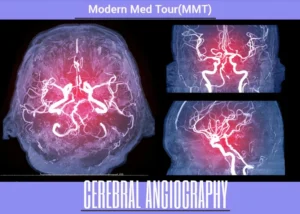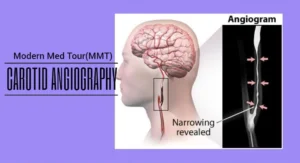
Cerebral Angiography
Cerebral angiography in Iran. This imaging allows doctors to evaluate the condition of the arteries and early detect any problems in the brain, such as narrowing of the arteries or the presence of blood clots.

Cerebral angiography in Iran. This imaging allows doctors to evaluate the condition of the arteries and early detect any problems in the brain, such as narrowing of the arteries or the presence of blood clots.

Angioplasty is a medical procedure used to treat blood vessel problems and improve blood flow. Angioplasty is a common procedure in the field of cardiovascular medicine.

Carotid angiography is an important medical procedure used to evaluate and image the carotid artery, which is the artery that supplies blood to the brain and face.
Title: Artery disease: definition and typesIntroduction:artery disease is a general term that includes a variety of conditions that affect the arteries, which are the blood vessels that carry blood from the heart to the organs And tissues in the body. These conditions include the buildup of deposits, blockages, and strictures that interrupt blood flow, thus reducing the delivery of oxygen and nutrients to the tissues. In this text, we will discuss the definition of arterial disease and its different types. Definition of arterial disease: Arterial disease is a condition related to damage or damage to the arteries, which leads to a reduction in their ability to transport blood effectively. This damage can be caused by the buildup of deposits on the artery walls, or by severe constriction or blockage. This can lead to a variety of health problems. Types of arterial disease: Coronary Artery Disease – CAD: This type occurs when the coronary arteries that supply the heart muscle with blood and oxygen are narrowed or blocked. Narrowing of these arteries can lead to heart attacks. Cerebrovascular Disease: This disease affects the arteries that supply blood to the brain. It may cause strokes and hypoplasia of the brain. Peripheral Artery Disease (PAD): It is characterized by narrowing or blockage of the arteries that supply the extremities with blood. It can lead to pain in the legs and may require surgery. Hepatic Artery Disease: It can cause decreased blood flow to the liver, affecting its function. Renal Artery Disease: Related to the arteries that supply the kidneys With blood. It may lead to high blood pressure and problems with kidney function. Mesenteric Artery Disease: It can lead to insufficient blood flow to the intestines, causing abdominal pain and digestive problems. Pulmonary Artery Disease: It can affect On the arteries that supply blood to the lungs. It can lead to shortness of breath and lung problems. Conclusion: Arterial disease is a serious health problem that requires immediate attention. Prevention and treatment depend on the type and severity of the disease. People seeking prevention from this disease should adhere to a healthy lifestyle and regular medical examination. For those with arterial disease, treatments depend on the type of problem and may include lifestyle changes, medications, and surgical procedures.Title: Diagnosis and Treatment of Arterial Disease: Definition and TypesIntroduction: Arterial disease is a group of conditions related to narrowing Clogged arteries, which reduces the flow of blood and oxygen to organs and tissues. These diseases include the buildup of deposits, narrowing of the arteries, and arterial damage. In this text, we will discuss the definition and types of diagnosis and treatment of arterial diseases. Definition of diagnosis and treatment of arterial diseases: Diagnosis and treatment of arterial diseases includes a group of medical procedures that aim to determine the size and severity of the problem and then treat it. Diagnostic procedures include the use of medical imaging such as X-rays and ultrasound, as well as medical procedures that direct treatment towards improving blood flow. Types of diagnosis and treatment of arterial diseases: Coronary arteries and locating blockages. And determining arterial narrowing. Stenting: Stent Placement: It is used to open and stabilize the arteries with a metal mesh to prevent re-blockage. Surgery: Artery Bypass Surgery: In which blood flow is redirected through the damaged artery. Medications (Medications): Cholesterol-Lowering Medications: Used to lower cholesterol levels. Antiplatelet Medications: Used to prevent the formation of clots inside the arteries. Conclusion: Diagnosis and treatment of arterial diseases depends on the type and severity of the problem. It is important to adhere to a healthy lifestyle to prevent these diseases and to seek appropriate treatment in the event of infection. Determining the type of treatment requires careful evaluation and guidance from doctors who specialize in arterial diseases.

Leila
One of our patient coordinators will honestly answer any questions you may have. Details of the medical services you need, the cost, referrals of other patients who have undergone the procedure in Iran before, and the results. Feel free to contact us for everything you need to know.
Address: Tehran – Ashrafi-Isfahani highway- end of Hemat Expressway – Tabatabaei Alley- Building No. 24.

© 2023 شركة مودرن ميد للسياحة الطبية - قسط وورد الأخبار، مجلة ومدونة وورد الموضوع.
© 2023 شركة مودرن ميد للسياحة الطبية - قسط وورد الأخبار، مجلة ومدونة وورد الموضوع.